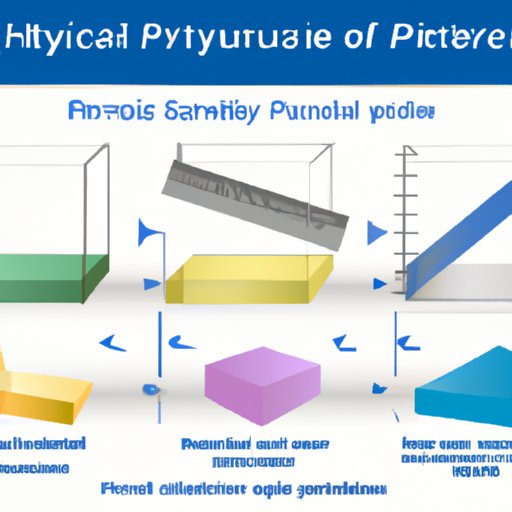
I. Introduction
Physical properties are characteristics of matter that can be observed or measured without changing the composition of the substance. These properties are essential in many fields of study, from chemistry to engineering and material science. Understanding physical properties enables us to better comprehend and manipulate the world around us. This article will provide comprehensive knowledge on various physical properties, their scientific concepts, and real-life applications.
II. 7 Examples of Physical Properties You Need to Know About
Mass, volume, density, color, texture, and conductivity are common examples of physical properties in everyday use. Mass refers to the amount of matter in an object, and it can be measured by a balance scale. Volume, on the other hand, is the amount of space an object occupies, and it can be measured using a graduated cylinder. Density is the ratio of mass to volume, and it determines the object’s buoyancy in fluids. Color and texture describe how an object looks and feels, and conductivity measures how well an object conducts electricity or heat. These properties are essential in manufacturing, construction, and scientific research.
III. The Science Behind Physical Properties: An In-Depth Look at Examples
Physical properties are determined by the object’s atomic and molecular structure, which affects how the substance interacts with other substances. Physical properties can be measured quantitatively, using instruments and calculations, or qualitatively, using human senses. For example, scientists use x-ray diffraction and electron microscopy to study the atomic structure of materials. Understanding physical properties enables us to design and optimize materials based on their desired characteristics, such as strength and conductivity. Research on physical properties has also led to technological advancements, such as nanotechnology and superconductivity.
IV. Exploring the Diversity of Physical Properties: Real-Life Examples
Physical properties are diverse and can manifest in many forms. For example, elasticity is the extent to which an object can deform and return to its original shape, while viscosity describes how thick or runny a substance is. Magnetism is the ability of a substance to attract or repel other materials with magnetic fields, while radioactivity is the emission of energy from the nucleus of an atom. Understanding these properties is essential in fields such as robotics, energy, and environmental science.
V. The Importance of Physical Properties in Material Science: Examples and Applications
Physical properties are critical in material science, the study of the properties and application of various materials. By understanding how different materials respond to various physical properties such as heat, light, pressure, and magnetic fields, scientists can create new materials with desired characteristics. For example, material scientists may use the physical properties of metal alloys to make stronger and more durable car parts. In the electronic industry, semiconductor materials have specific physical properties that make them useful in creating transistors and integrated circuits.
VI. A Beginner’s Guide to Physical Properties: Examples That You Must Know
For beginners, it is essential to understand the fundamental physical properties, such as density, volume, and mass, because they are regularly used in everyday life. Others include temperature, which describes the average kinetic energy of a substance’s molecules, and pressure, which measures the force exerted on an object. Electricity and magnetism are also physical properties that manifest daily. For instance, magnets stick to refrigerator doors because the door material is made of metallic compounds, and magnetic fields are present in the earth’s core.
VII. The Role of Physical Properties in Everyday Life: Examples That We Encounter Daily
Physical properties are all around us, and we interact with them daily, often without realizing it. Buoyancy is how substances float or sink in other fluids, and this affects everyday phenomena such as swimming and boat navigation. Friction, the resistance between surfaces that opposes motion, is essential in many disciplines, such as auto mechanics and sports. Understanding physical properties is crucial in making everyday decisions about how to interact with physical objects effectively.
VIII. Unlocking the Mysteries of Physical Properties: Examples That Show the Fascinating World of Science
Scientists are still researching and discovering many physical properties, leading to new revelations about the natural world. For example, the recently discovered property of superconductivity allows the creation of materials that carry electrical current with zero resistance. Another example is piezoelectricity, a property that generates electricity from applying pressure on certain materials. Physical properties are a fascinating and exciting field of science that can lead to new, revolutionary technologies and advancements.
IX. Conclusion
Physical properties are an essential part of science and life, and understanding them helps us make new discoveries and manipulate the world around us. This article has explored numerous examples of physical properties, their underlying scientific concepts and real-life applications. By learning about physical properties, we can appreciate the beauty and complexity of the natural world and unlock new possibilities in technology and innovation.




